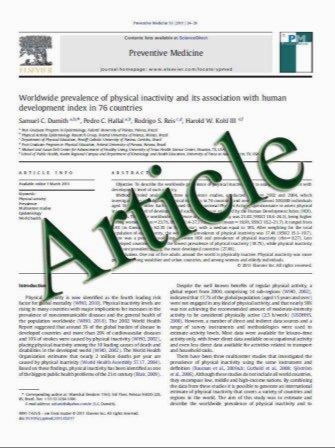Establishment of Secondary Iron Overloaded Mouse Model: Evaluation of Cardiac Function and Analysis According to Iron Concentration
- نوع فایل : کتاب
- زبان : انگلیسی
- مؤلف : Se Na Moon • Ji Whan Han • Hui Seung Hwang • Mee Jeong Kim • Soon Ju Lee • Jae Young Lee • Chang Kyu Oh • Dae Chul Jeong
- چاپ و سال / کشور: 2011
Description
Periodic blood transfusion can lead to secondary iron overload in patients with hematologic and oncologic diseases. Iron overload can result in iron deposition in heart tissue, which decreases cardiac function and can ultimately lead to death due to dilated cardiomyopathy and cardiac failure. In this study, we established murine model of secondary iron overload, studied the changes in cardiac function with echocardiography, and examined the histopathologic changes. Three experimental groups of the six week-old C57/BL mice (H-2b) were injected intraperitoneally with 10 mg of iron dextran daily 5 days a week for 2, 4, and 6 weeks. Cumulative doses of iron for the three experimental groups were 100, 200, and 300 mg, while the control groups were injected with the same amounts of phosphate-buffered saline. We studied the cardiac function under anesthesia with echocardiography using a GE Vivid7 Dimension system. Plasma iron levels and liver iron contents were measured. The hearts and livers were harvested and stained with H&E and Perls Prussian blue for iron, and the levels of iron deposit were examined. We assessed the cardiac measurements after adjustment for weight. On echocardiography, thicknesses of the interventricular septum and posterior ventricular wall (PS) during diastole showed correlation with the amount of iron deposit (P\0.01). End-diastolic volume showed dilatation of the left ventricle in the 300 mg group (P\0.01). Changes in the fractional shortening were not statistically significant (P = 0.07). Plasma iron levels and liver iron contents were increased proportionally according to the amount of iron loaded. The histopathologic findings of PS and liver showed higher grade of iron deposit proportional to the cumulated iron dose. In this study, we present an animal model which helps understand the cardiac function changes in patients with secondary iron overload due to repeated blood transfusions. Our results may help characterize the pathophysiologic features of cardiomyopathy in patients with secondary iron overload, and our model may be applied to in vivo iron-chelating therapy studies.
Pediatr Cardiol DOI 10.1007/s00246-011-0019-4 Received: 30 December 2010 / Accepted: 19 May 2011


